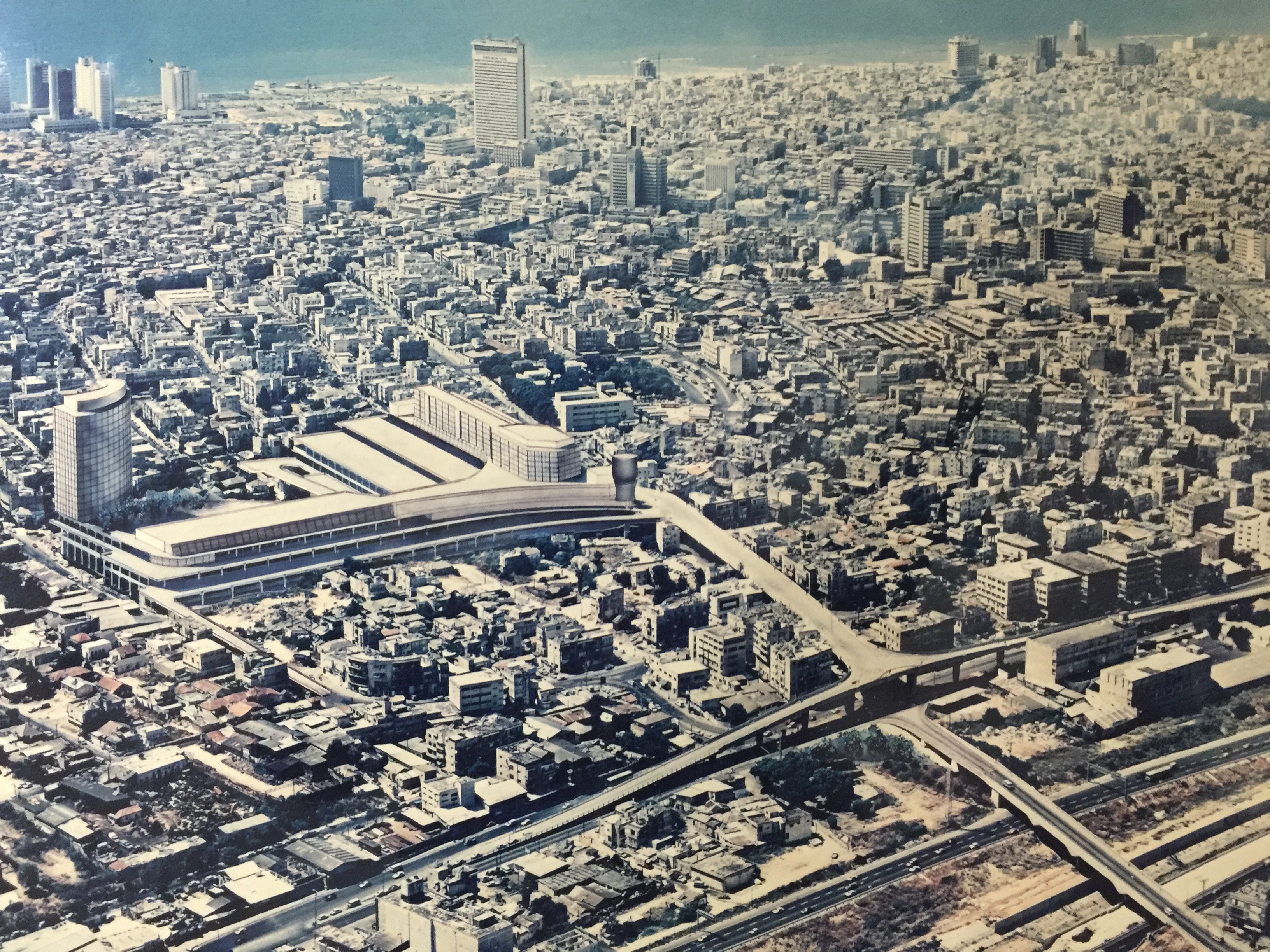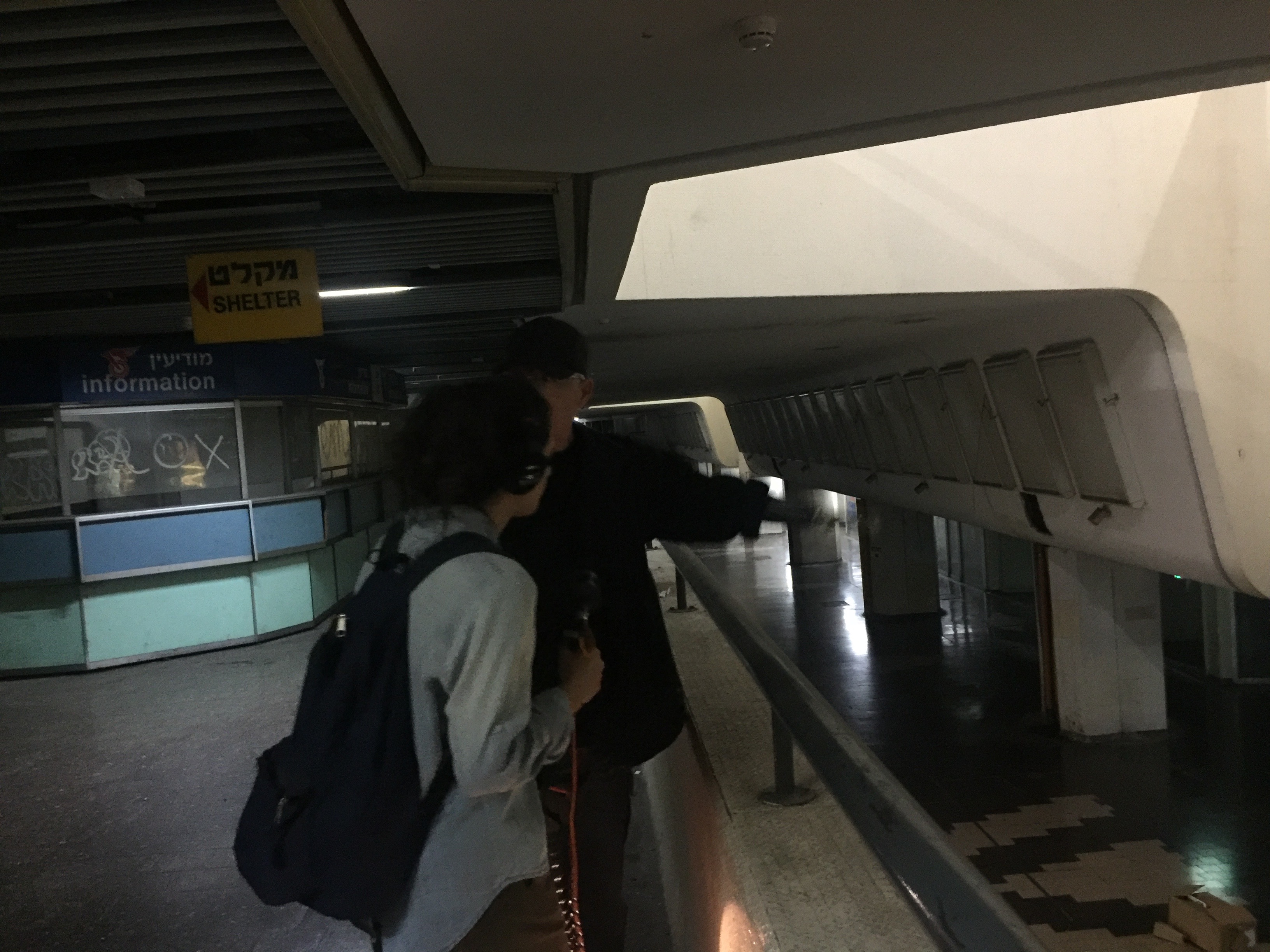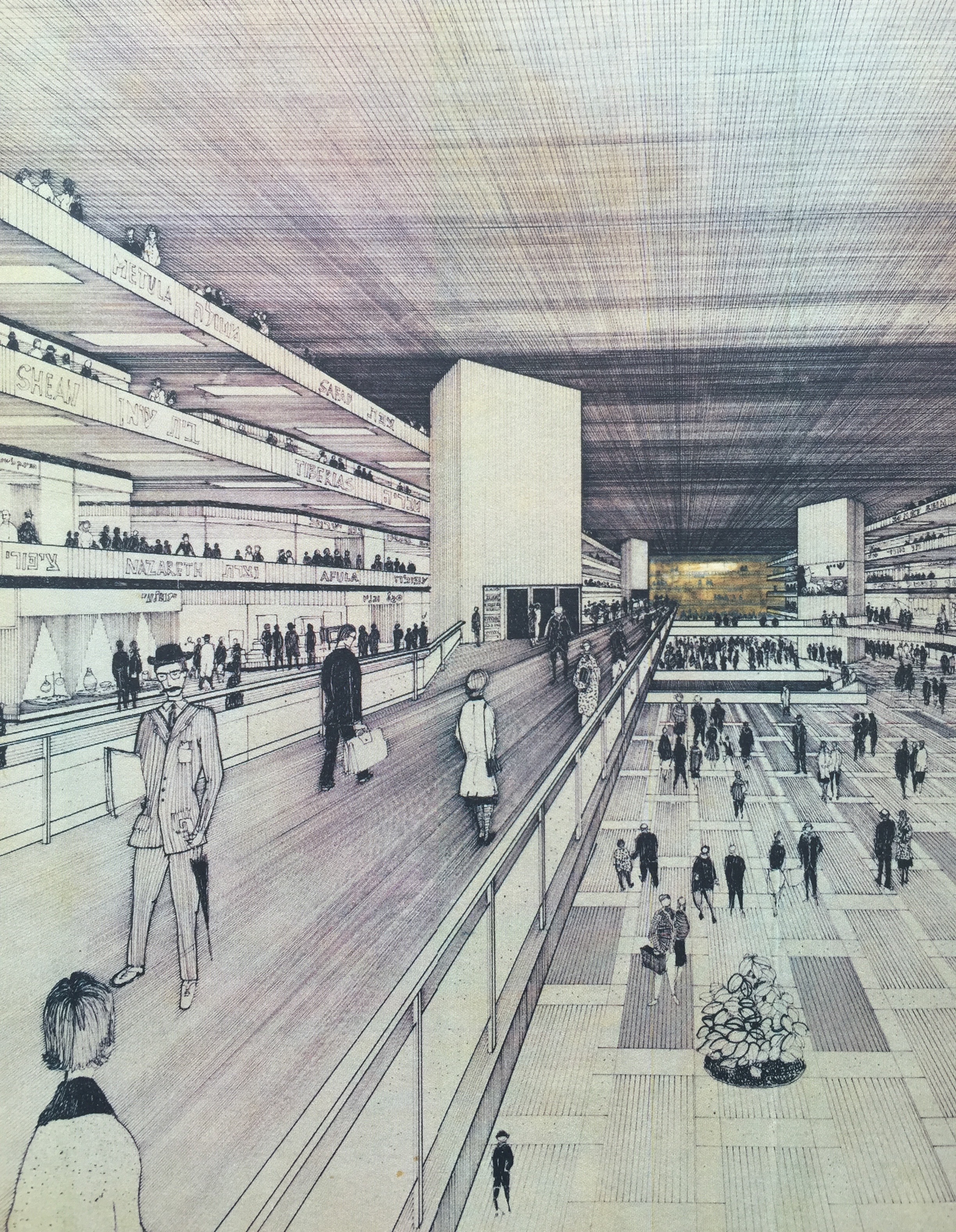Israeli buses regularly make international headlines, be it for suicide bombings, fights over gender segregation, or clashes concerning Shabbat schedules. One particular ill-fated megastructure, however, has been at the nexus of various lesser-publicized conflicts: a building in Tel Aviv designed to be the largest bus station in the world.

At 2.5 million square feet, the Tel Aviv Central Bus Station was the product of a grand vision to build an indoor micro-metropolis. Its expansive plans featured a shopping mall with thousands of stores, services and entertainment offerings. The structure even came to house a (now deserted) subterranean theater, originally meant to entertain people waiting for their bus.
This vision gave way to a darker reality, resulting in what reporter Yochai Maital describes as “a derelict eight-story behemoth and modern day Tower of Babel, which mirrors much of modern Israeli history, with its grand vision and messy implementation.”
Though construction began in the 1960s, the building would not be inaugurated until decades later. The station was initially designed by Ram Karmi in 1967 but eventually completed in 1993 by architects Yael Rothshild and Moti Bodek. The project became something of a white elephant, a nickname recognized rather overtly during the opening ceremony when a white elephant balloon dropped in on the festivities.

The layout is intentionally confusing, a “multi-central” maze of misleading corridors, dark spaces and many now-abandoned places. The perplexing floor plans were inspired by Jerusalem’s historic Old City. The architect wanted the building to look and feel like a system of small alleyways, disorienting but cozy and familiar. In some sense, it has been successful; the building feels to many quite like a labyrinth, and even people who work there get lost sometimes within its walls.

Today, entire sections of the structure are uninhabited or used only for illicit purposes; old shops and winding halls conceal sex workers, drug sellers, rave throwers and others who appreciate the winding darkness.
The station was made to accommodate an order of magnitude more passengers than it actually has, oversized for its city. The failure of this building can be traced (at least in part) to overly ambitious developers, as well as oversold investors who bought into the dream.
Its architects envisioned the Tel Aviv Central Bus Station as a climate-controlled “city under a roof” and, in a way, that is what it has become: it has a lot of things that work, but it also contains those sad, scary and derelict places found in any urban environment.

This episode was originally produced for Israel Story, the English-language version of the popular Israeli radio program Sipur Israeli, which is distributed by PRX and produced in partnership with Tablet.




Comments (15)
Share
Oh my God, the “New” CBS in Tel Aviv is the weirdest building I have ever been in. I have gone through it many times and I’m still not sure what’s going on there. I’ve even been on the “forgotten floors” which look like they are from a dystopian world.
Please do one on Baltimore’s Lexington Market! This reminds me very much of that.
I wonder how user experience might have helped prevent this? This is part of a broader question – how can UX fit with architecture? Hard to prototype buildings and architectural designs – or could VR make this a reality? I’m envisioning an alternate history where the architects/designers used VR to test this projected design/space with users; found that it did not work for them; and then came up with a better design through usability testing.
This is also an interesting topic of the gap between vision and implementation.
You have awoken so many memories in me. I spent very little in this bus station, but only because I was terrified of being in it alone.
Wow. This episode brought up so many memories for me. In the early ’90s I was a teenager living in a boarding school away from home, and every few weeks we where bussed to the TLV station so we can go home for the weekend- first to the old bus station and then to the new one, which opened about a year or two after I started boarding school.
I remember the ladies with the bus station logo who gave out maps of the place at the opening. How big and shiny it seemed, how modern compared to the open air old bus station. And while even then there where many empty shops, it still seemed fresh and new.
But even before I finished studying the place had changed, and the optimism vanished.
A wave of bus bombings that started in the country didn’t help- the thought of a bus exploding in a closed space like the new bus station wasn’t pleasant, particularly while waiting for a bus in the always dark underground floors.
These days, the bus system has changed a lot, and many connections between buses are made in other smaller hubs.
Yet the building still stands, serving it’s few passengers, and every once and while the media remembers it and asks what will happen to the building. Should it be demolished? Changed? Something else?
Thanks again for a great show and great episode!
The first thing that came to mind was Buses? Why would anyone want to build a huge bus station? Trains maybe, not buses! Then ten minutes later, it hit me! Oh yeah. Trains! Already got enough train rides a few years back. Check.
Still, world’s biggest bus station? Serious? If they go all electric it might be salvageable.
Interesting connection, although I don’t think it has anything to do with the Holocaust. The Ottomans (with German help) built a train system in what was then Palestine in the late 19th and early 20th century. The British took it over (and changed the gauge) in World War I. It was originally conceived and built as a way of connecting Turkey, Lebanon etc. with Egypt and Mecca and Medina to the East. When Israel became a country in 1948, the neighboring countries put a halt to train traffic, so Israel’s train system became essentially land-locked. Today it still functions, especially in the center of the country, and a new fast rail system linking Jerusalem and Tel Aviv in set to open in 2018.
It is mostly that there are a lot of places in Israel where the train just does not go, such as smaller towns. It is also much easier to put in a new bus line than a train line, as long as the roads already go there.
Oh and Moshe Katzev? He became president of Israel and is now in Jail for Sexual Assault.
Most Israelis I know avoid the place at all costs. Even when I had to take the bus to and from Tel Aviv every day I made sure to get off long before it got to the CBS. Israeli buses generally pickup and dropoff at the road-side.
It’s interesting to note that the same Ram Carmi designed the Supreme Court building in Jerusalem, a regal and inspiring structure.
Why not create mixed use housing for students, artists, and young families? The people could use the ease of access to markets, shops, and transportation. Most spaces have a use, it just might not be the use for which it was originally designed.
Great podcast
No song credit for Funkadelic’s “Maggot Brain?”
“Maggot Brain” by Funkadelic. The most obvious music in the piece. No credit given.
Not cool, man, not cool.
Only way to make this up is to put a Maggot Brain symbol on the next coin.
I’ve been trying to remember who that was for a half hour. No music credit. You saved my sanity.
Tel aviv population is is about a 3 million and not 400,000 as mentioned.
400,000 is only at the main municipality “tel-aviv-yafo”.